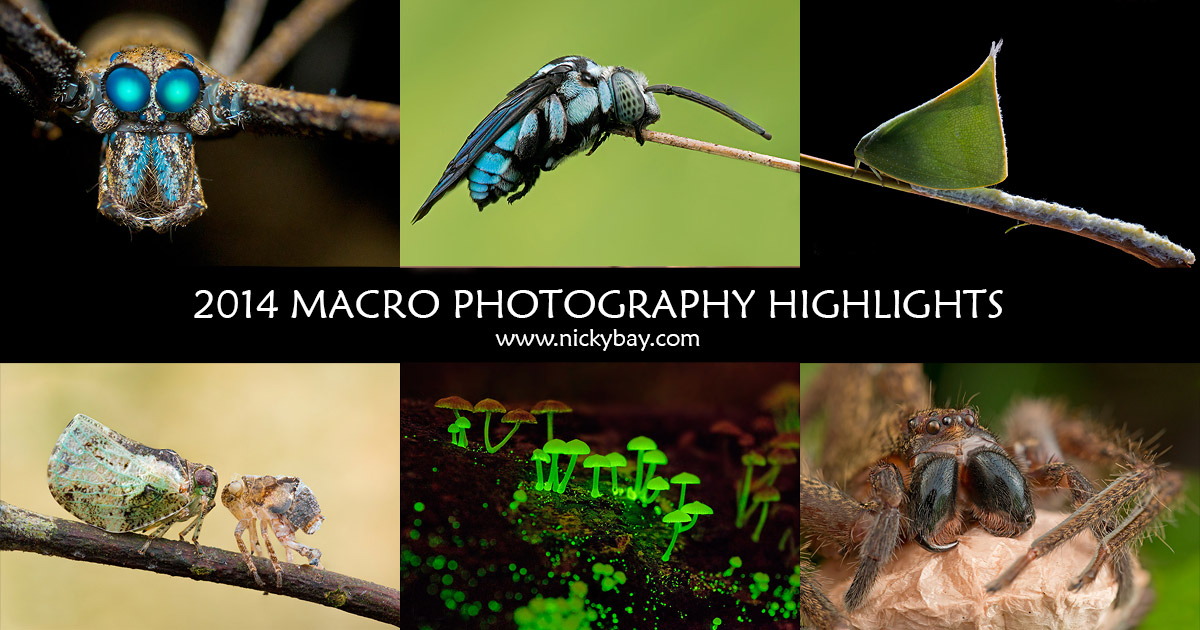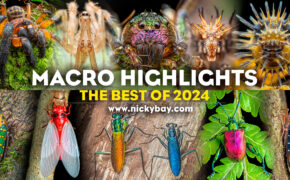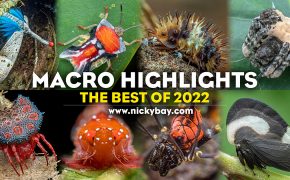2014 Macro Photography Highlights
2014 has been relatively quiet, but littered with many memorable shots. I made 46 field trips this year and maintained a relatively consistent lens and flash setup unlike earlier years. This year, I had my first overseas photo exhibition held in France for two months, and was the first featured photographer in I, Photographer on RazorTV. With over 20,000 shots taken, it was difficult to present a concise selection. After several rounds of sorting out the photos, I have uploaded over 3,000 photos and narrowed the selection down to just 100. They may not be the best photos of the year, but the most notable ones. Please take your time to enjoy the year’s work. 🙂
If you like my work and would like to see more of the latest photos, just follow my Facebook page and my Flickr account, or just follow my personal Facebook account if you don’t mind photos of cats, cats and more cats. For questions regarding this post, you may post your comments at the bottom of this page or contact me at [email protected]. Feedback, suggestions and constructive criticism is appreciated. Sharing of this post is also deeply appreciated as a larger reach would mean potential photo sales and a means to cover the costs of the field trips.
Many of these shots were only possible with the help of my shooting buddies. I could not have done them alone. Thanks goes out to Andrew, Chris, David, James, Melvyn, Sagita, Victor and Sea Wei and who have been doing the weekly night shoots together in 2014 and generously sharing their finds!
Macro Equipment Summary
Since many have been asking about the macro equipment used for these shots, I’ve included a short summary here of the equipment that I am using in the field now.
| Type | Handheld | Tripod | Wide Angle |
| Camera Body | Nikon D800 | ||
| Lens | Tamron 90mm F/2.8 | Micro-Nikkor 200mm f/4 | Sigma 15mm f/2.8 Fisheye |
| Extension Tube | Kenko 20mm+12mm | – | – |
| Close up Filter | Raynox DCR250 | – | – |
| Flash | 2 x Nikon SB-R200 with softbox and concave diffuser 1 x Nikon SB-R200 without diffuser (back-lighting) Mounted on FotoPro DMM-903 | ||
| Tripod | – | Gitzo G2220 Explorer | – |
| Ballhead | – | Markins M20 Ballhead | – |
| Strap / Grip | Peak Design Slide and Clutch | ||
| Search light | Any XM-L2 flashlight from eBay | ||
| Ultraviolet light | Any 365nm flashlight from eBay | ||
| Focusing light | Any XM-L2 headlamp from eBay | ||
Robberfly (Asilidae)
This robberfly kept chasing me, why? I smell? Anyway, it gave me the opportunity to take some close ups and I managed two shots with the robberfly in flight and in decent focus. See the other photo here.
Planthopper (Fulgoridae)
Everyone has a past. Looking back shows what defines you for what you are today. Fresh from the moult, this planthopper decided to turn around to face its shedded exoskeleton for this interesting composition.
Fungus gnat larvae (Sciaridae)
What looked like a cluster of worms turned out to be a mind-boggling example of group locomotion. The group as a whole traveled faster than if they had moved as individuals!
Thread-legged assassin bug (Emesinae)
This thread-like bug on its own was a pain to focus on, but when we realized that a tiny salticid was at the end of the rostrum, we had to take close ups!
Ground spider (Zodariidae)
Many zodariids are known to prey on ants. This particular one had snagged a huge supper!
Lacewing larva (Chrysopidae)
We had seen the lacewing eggs on many occasions and finally had a chance to witness the hatchling emerging from the egg! Will it do a pole-dance down the stalk next?
Derbid planthoppers (Derbidae)
The male derbid planthopper looked like it was collapsing in ecstasy during copulation.
Flatid planthopper (Flatidae)
Another first was this scene of a flatid planthopper laying a row of eggs. Lighted from behind to highlight the venation of the wings.
St Andrew’s cross spider (Argiope sp.)
Not the first time sighting an Argiope weaving her egg sac, but the first time finding it in the early stages. It lets us see the “egg yolk” which is actually a cluster of the spider’s eggs. Funny how it looked like a “sunny side up”!
Bagworm moth (Psychidae)
Ever wondered how the owner of the cryptic looking cones of debris looked like? Here’s the bagworm moth emerging from its coccoon!
Longhorn beetle (Palimna sp.)
A skittish longhorn beetle may not always mean bad news. It took off a few times and gave me the opportunity to capture it in flight! Looked like it is ready to take a dive!
Harvestmen (Opiliones)
Two harvestmen were spotted facing each other. We thought that some mating ritual was going on, but found that they were both sharing their dinner – a scorpion!
Net-winged beetle larvae (Lycidae)
We were observing a cluster of net-winged beetle larvae, and spotted this one that just cracked open!
Wandering spider (Ctenidae) with biting midges (Ceratopogonidae)
Carcasses tend to attract midges, and the wandering spider’s dinner proves to be the main lure in this scene.
Centipede (Scolopendra sp.)
This large centipede had just emerged from its moult, and is slowly “recycling” the shedded exoskeleton.
Ladybird (Coccinellidae)
The lady was taking her clothes off slowly, and finally entering adulthood.
Ant-mimic crab spider (Amyciaea sp.)
The tiny Amyciaea is capable of capturing red weaver ants much larger than itself, but it might have lost its two front legs in the process.
Huntsman spider (Sparassidae)
This mother-to-be clutches onto her egg sac tightly with her chelicerae regardless of any incoming threat. Until the eggs are hatched, she would have to go without food for weeks.
Bioluminescent fungi (Filoboletus manipularis)
A chance encounter with an unusually large cluster on a fallen tree. This “upskirt” view shows a view of the pitted pores.
Bioluminescent fungi (Filoboletus manipularis)
A giant cluster was spotted by my friends, but I was out of town. By the time I got to the site, most had already died and this was my consolation shot. Luckily, it turned out to be utterly spell-binding. Welcome to Pandora!
Longhorn beetles (Sclethrus newmani)
This pair was at it for a very long time, and allowed me to document the action in a fun way. 😛
Big-headed bark spider (Caerostris sp.)
Static photos had been difficult to visualize the subject when it had an odd shape. 30 individual handheld shots formed this animation.
Wrap-around spider (Dolophones sp.)
How flat exactly is the wrap-around spider on the branch? This animation gives a clearer picture.
Segmented trapdoor spider (Liphistius sp.)
Some spiders can be incredibly black and reflective, which makes the eye arrangement difficult to see. See how black the spider looks under normal light. Ultraviolet light helps to highlight the eyes in this case. This mature male was found wandering about on a concrete drain and looking for a mate.
Stink bug hatchlings (Pentatomidae)
A small cluster of hatchlings with an outstanding fluorescence under ultraviolet. This was shot with high ISO, hence the noisy picture.
Caterpillar
The explosive colours are a sign against any contact with the caterpillar’s spines. Mesmerizing sight!
Stick insect (Phasmatodea)
Stick insects had been often overlooked as composition is usually difficult. However, this one had a remarkable fluorescence!
Net-winged beetle larvae (Lycidae)
The fluorescence of these larvae makes them look like splashes from a dazzling water painting.
Longhorn beetle (Cerambycidae)
Most beetles have compound eyes that will fluoresce under ultraviolet. It allows an alien-like view like this.
Bird dung spider (Pasilobus sp.)
One moment a piece of bird dung, another moment a precious stone.
Millipede (Diplopoda)
Only some millipedes fluoresce. This was the brightest fluorescence that we had ever seen on a millipede.
Ogre-face spider (Deinopis sp.)
Also known as net-casting spiders. Just when we thought that the ogre-face couldn’t get any scarier, the eyes lit up under ultraviolet with an eerie blue.
Scorpion (Liocheles sp.)
Classic fluorescence that everyone else is familiar with! The fluorescence from scorpions is much brighter than that from other arthropods, making them much easier to shoot for beginners.
Whip scorpions (Thelyphonida)
First time seeing these vinegaroons that close to mating. Due to their size, I did a feeble macro attempt with the 15mm.
Black tarantula (Selenocosmia sp.)
I had waited over a year to shoot this mini-gorilla as none had been cooperative enough to grant me an audience in earlier encounters.
Huntsman spider (Heteropoda boiei)
One of the largest sparassids in Singapore, and incredibly quick at running around on the tree trunk.
Leaf mimic grasshopper (Systella sp.)
These leaf-mimics have been my favorites for back-lighting due to the thin leaf-like bodies.
Huntsman spider (Heteropoda davidbowie)
The sparassid’s hair on the legs are (hopefully) highlighted with back-lighting.
Lace bug (Tingidae)
Rare in these parts, a back-lit shot offers a spectacular view of the lace bug’s body.
Archduke larva (Lexias pardalis dirteana)
With such a flamboyant outline, back-lighting brought out the spines in its full splendour.
Spittle bug nymph (Cercopidae)
Spittlebugs are usually found within lumps of foam. This nymph was just beginning to create the foam. This foam (or bubble-wrap if you like) serves to protect the bug from predators and keeps it moist!
Moth-like planthopper (Ricaniidae)
Fresh from the moult, with wing venations clearly highlighted.
Caterpillar
These tiny caterpillars tend to dangle via a thread of silk. Thought it would be interesting to see how it looked with a back light.
Barklouse mimicking a jumping spider
This really had me fooled until I looked closer! The pattern on the wings had me thinking that it was a salticid!
Dead leaf grasshopper (Caelifera)
The outline of this grasshopper is well concealed to resemble bits of a dead leaf.
Masked hunter assassin bug (Reduvius sp.)
We see this masked hunter quite frequently, diligently piling debris on its body. This particular one managed to pile moss on its body as well! For those unfamiliar with this bug, try to spot the eye!
Jumping spider (Salticidae)
Tilting their heads increases the cute factor. These cute little jumpers have that perpetual curious look!
Jumping spider (Salticidae)
Blue moustache! How could we not love this?
Jumping spider (Hyllus sp.)
The bold colours on this heavy jumper made it stand out. Sometimes, we called it the “gentle giant” as it was more docile compared to other salticids.
Jumping spider (Epeus sp.)
Looked like an injured “mohawk” jumping spider as it moved very slowly – found it by tracing a line of silk to the bottom foliage.
Jumping spider (Epeus sp.)
Fresh from the moult, the ears are clear and we could see through the eyes for a hypnotizing effect.
Orb web spider (Neoscona sp.)
This Neoscona has a beautifully patterned abdomen, and is possibly new to science.
St Andrew’s cross spider (Argiope sp.)
A simple natural light handheld shot which shows one of the more complete examples of the “cross” of the St Andrew’s Cross Spider. The extended “X” is the web’s stabilimentum, which could possibly be an attempt to make the spider look larger.
Tree stump orb weaver (Poltys sp.)
This is one of the largest examples of the tree stump orb weaver, but almost unnoticeable to the untrained eye.
Long-horned orb weaver (Macracantha arcuata)
This spider appears in every annual compilation for the longest horns on any spider, ever. No idea if these horns had any practical purpose?
Orb web spider (Cyclosa sp.)
These tiny orb weavers have really sticky webs, and that makes it difficult for us to take close up shots without destroying the web. Sometimes, a slightly different angle does the trick!
Ladybird-mimic spider (Paraplectana sp.)
The sinister ladybird mimic has made another appearance since my last sighting way back in 2011 – The Beauty of Ladybird Mimicry. Still looking magnificent, still a ridiculously good mimic!
Crab spider (Thomisidae)
One of the more interesting thomisids seen this year. We called this the “dog-faced” crab spider when we saw it.
Mangrove trapdoor spider (Idioctis sp.)
I had been toying with the idea of visiting the mangroves in hunt for this mangrove trapdoor spider for a long time, and was lucky enough to locate one in the first attempt! These magnificent trapdoor spiders build their burrows on mud lobster mounds and are able to shut their trapdoors tight enough to hold out the water when the tide comes in. Here’s a shot of the burrow and trapdoor.
Big-jawed spider (Tetragnatha sp.)
Despite being very common, the overly large chelicerae of Tetragnatha have always been great macro subjects. This one had particularly hairy chelicerae.
Tube trapdoor spider (Damarchus workmani)
A close up of this adult mygalomorph reveals a cluster of mites around the chelicerae. This appears to be very common for mygalomorphs, which made me wonder if they just had dirty mouths? On a separate note, I did not see any trapdoors at the entrances of the burrows of these nemesiids. How did this common name come about?
Comb-footed spider (Chrysso sp.)
A parasite clings onto this comb-footed spider’s abdomen. Not sure if it had hatched from within the abdomen?
Eight-spotted crab spider (Platythomisus octomaculatus)
Probably the most stunning crab spider in Singapore, we found this mother-to-be struggling to hold her nest together as the bottom leaf had been broken off by careless photographers who wanted to get shots of the mother with the egg sac. Luckily, we were able to perform a minor “surgery” and mended the nest to keep her from view of potential predators. Nature photographers, please remember to exercise caution when photographing such subjects. Some may only get a single chance to reproduce in their life time, so let’s try to make it count. Read more on macro photography ethics.
Sac spider (Clubionidae)
I was lucky to spot the sac spider in 3 different stages of life in the same area, and put all of them together in a single image. 1. Shows courtship, 2. Shows the mother guarding her row of eggs, and 3. Shows her guarding her newly hatched spiderlings. The last photo clearly shows the “sac” that the spider builds under the leaf.
Scorpion (Lychas scutilus)
Another common subject, but this time I got round to taking close ups of the mother’s face with the baby scorpions climbing over her head to highlight the difficulties of motherhood. 😉
Harvestman (Opiliones)
Just another harvestman, but with an “X” over the face!
Treehopper (Membracidae)
I find membracids to occur in the most bizarre variety of shapes. This one was mimicking a tiny twig, with a little leaflet at the tip!
Derbid planthopper (Derbidae)
One of the things I realized about derbid planthoppers this year, was that they never had the “cross-eyed” look when I shot them at night. Here’s how their crossed-eyes looked like in the day.
Treehopper (Membracidae)
This thorn-mimic treehopper had pinkish patches that made it stand out from the common ones.
Planthopper (Fulgoromorpha)
A surprise find in a concrete drain! This planthopper has a large inflated structure in front of the head that resembles a snout.
Fulgorid planthopper (Penthicodes sp.)
Often found on tree trunks, this is one of the most colourful of planthoppers in our local forests.
Assassin Bug (Reduviidae)
Sometimes, it was more fun to take macro shots of a bug standing on a larger bug.
Scale Insect (Coccoidea)
Usually ignored, we finally decided to take shots of this flat little thingy on leaves. Now, where are the eyes?
Cuckoo bee (Thyreus sp.)
Another regular in my annual series, the sleeping blue cuckoo bee is definitely one of the most photogenic subjects in this series!
Wasp (Stenogastrinae)
We usually see them at rest on their nests at night. Look at the waist to die for!
Mantis parasitic wasp (Podagrion sp.)
Another parasitic wasp dedicated to laying eggs into the ootheca of mantises. Check out a much clearer oviposition shot that I took last year.
Cicada parasite beetle (Rhipiceridae)
Famed for their fanned antennae, these beetles are a common crowd favorite!
Darkling beetle (Tenebrionidae)
We like to call this the “oil-spill” beetle for the vivid reflections on its elytra and pronotum. This poor fella had clusters of mites sucking on it!
Tortoise beetle (Cassidinae)
The type of shot loved by photographers but not a favorite with entomologists. The tortoise beetle usually hides its head when at rest, and may stick its head out when ready to walk. Here’s a shot of it in flight that I shot last year.
Tiger beetles (Cicindelinae)
I once blogged that these are the fastest running land creatures on earth. But when we find them at night… they are really quite docile! You can even spot a mating pair in this mess of tiger beetles.
Fungus weevil (Anthribidae)
Ultraman reborn. Our favorite eyes from a beetle!
Soldier fly (Stratiomyidae)
Shooting compound eyes is a common goal in macro photography. No annual series is complete without a close up of these arresting eyes!
Mantisfly larvae (Mantispidae)
We had seen the tiny eggs before, but realized that we might have missed out the larvae as they were incredibly small and almost not visible with the naked eye!
Crane fly (Tipulidae)
The crane fly is a pain to shoot when they decide to dance ecstatically while we try to focus on it. Once in a while, we manage to get shots of the compound eyes as well!
Long-legged fly (Dolichopopidae)
These fast-moving flies are often spotted zipping around in the day. This looks like a different species from the usual ones, and stood still enough for us to take some record shots.
Mantisfly (Mantispidae)
Half mantis, half fly. Believe it or not, we found it on the ceiling of our hotel in Cameron Highlands.
Common flashwing (Vestalis amethystina)
Close ups of damselflies have a certain allure to many. They really are photogenic!
Lacewing (Chrysopidae)
The most beautiful lacewing that we found this year!
Pointed snout cicada (Mogannia sesioides)
Not the usual cicada. This has a weird pointy “nose”!
Leaf insect nymph (Phylliidae)
This tiny leaf insect nymph was hiding under a single blade of grass. Simply adorable!
Malayan bridle snake (Dryocalamus subannulatus)
The classic “S” retracted position would usually have me stepping back with caution, so just some record shots of this lovely serpent!
Changeable lizard (Calotes versicolor)
So this is what supper looks like!
Earless agamid (Aphaniotis fusca)
This agamid was sleeping so sweetly that we had to take shots of it!!
Caterpillar
If you’re happy and you know it clap your hands!
Caterpillar
Bad hair day? But the hair is so straight that some considered this to be a good hair day. 😛
Caterpillar
Hello Kitty comes in many different forms…
Milkweed butterfly chrysalis (Euploea sp.)
Had always wanted to take shots of this amazing mirror-like chrysalis, but only a day shot would do it justice. You can see my reflection on the chrysalis itself!
Poop barricade
Never got to find out what this was, but the surrounding yourself with a defensive wall of poop is something new to me! Please let me know if you have any clue to what this might be.
Caged pupa (Cyana sp.)
Metamorphosis almost complete. The wings, eyes and antennae are already visible! The cage made of spines from the larval (caterpillar) stage has served its purpose well, protecting the pupa from potential predators.
Unknown larva/pupa
Looks like a larva in a mystical hue of blue preparing for metamorphosis?
Behavioral Shots
Most of the more memorable shots were of subjects engaged in natural activities such as copulation, courtship, flight, predation, eclosion or moulting. These are typically deemed as rare and locating them depends a lot on luck.

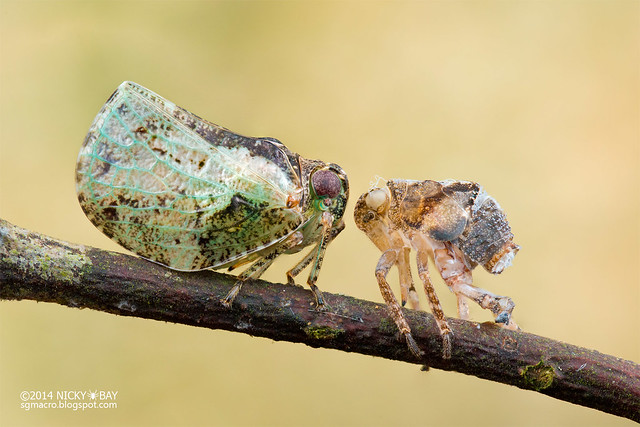
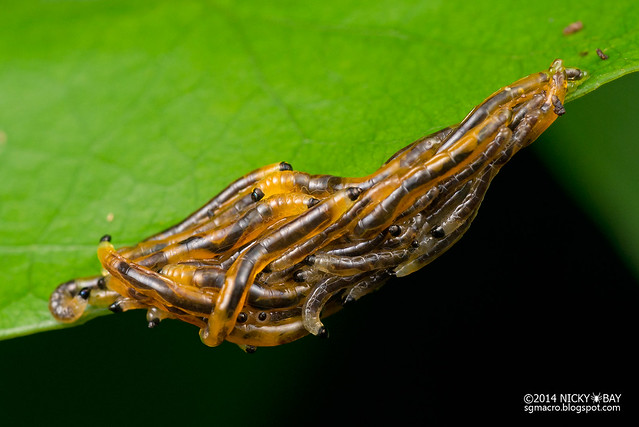
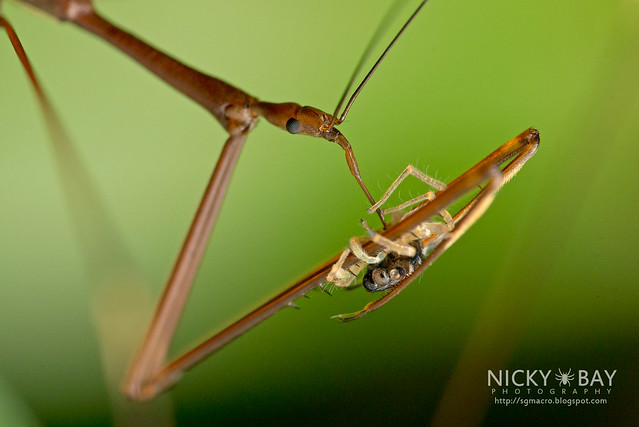
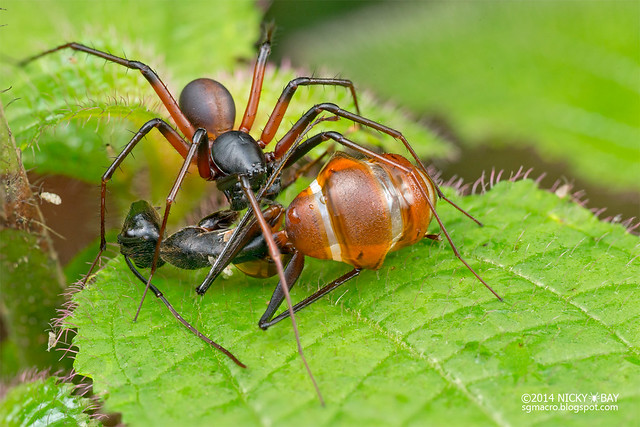
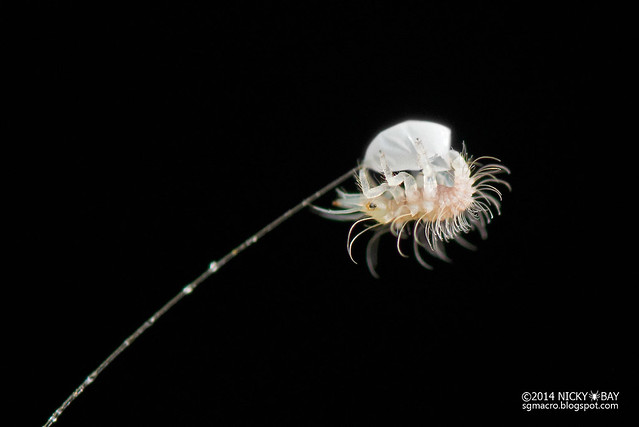
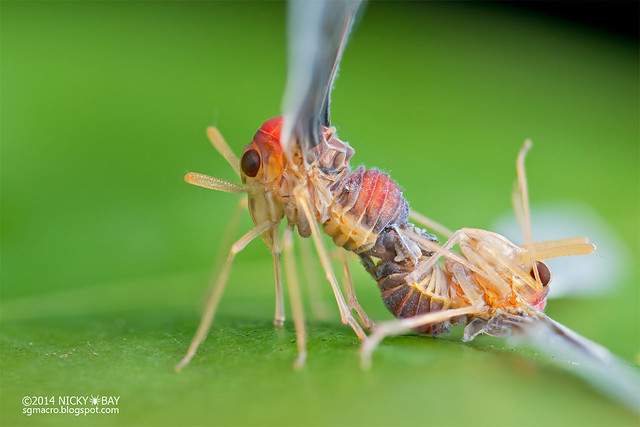
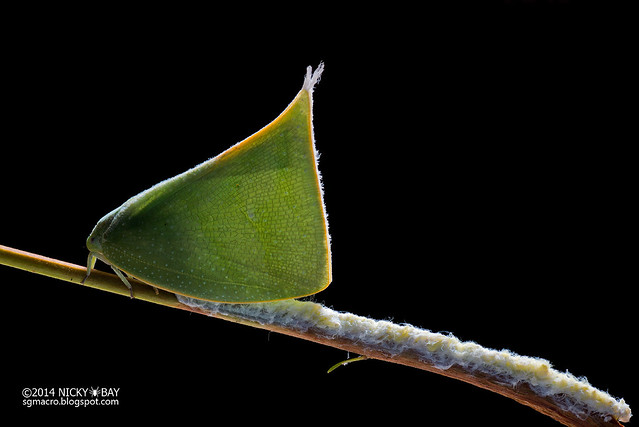
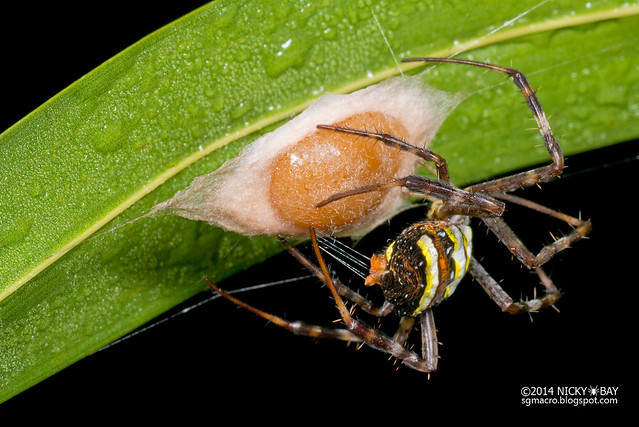
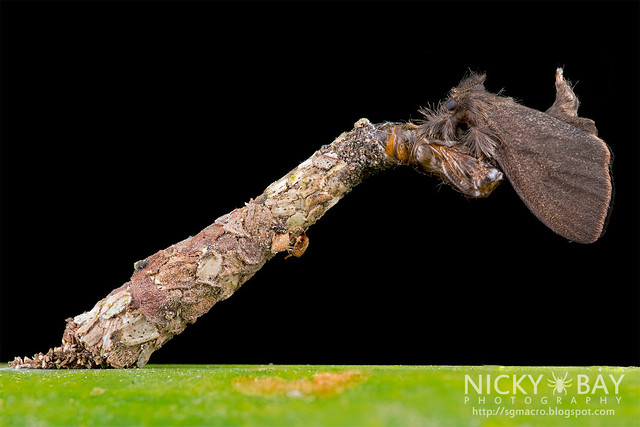
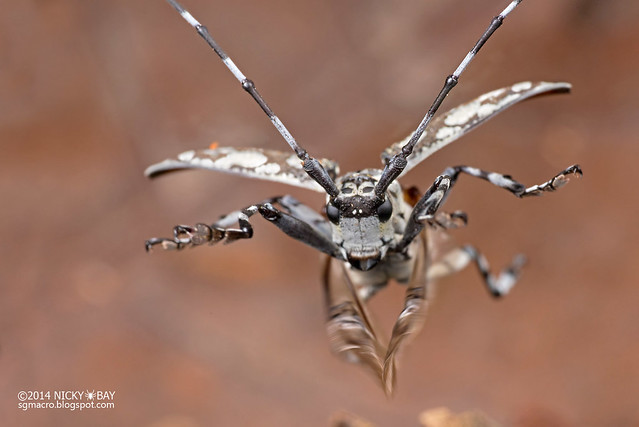
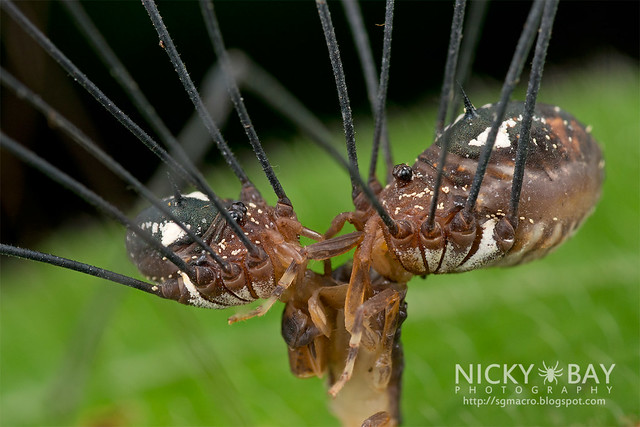
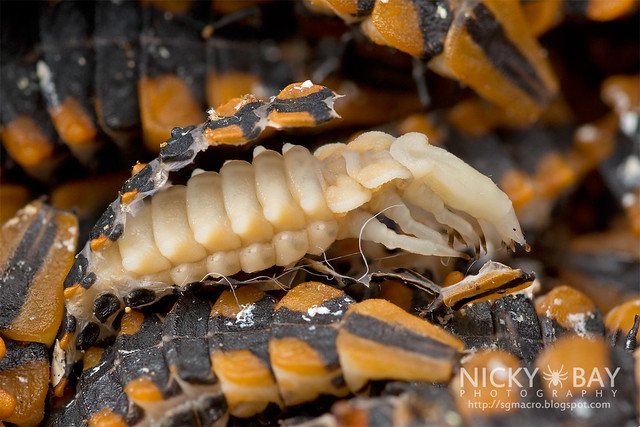
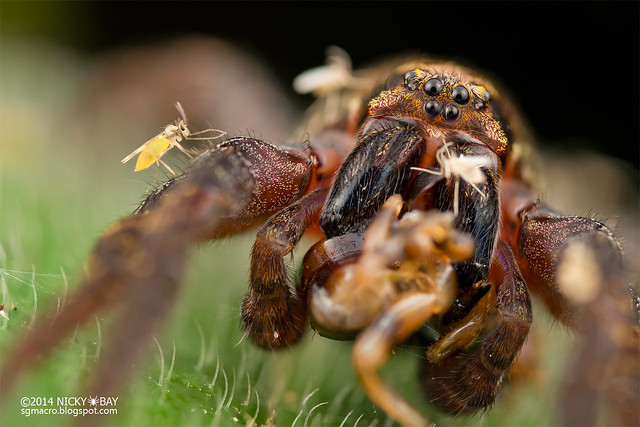
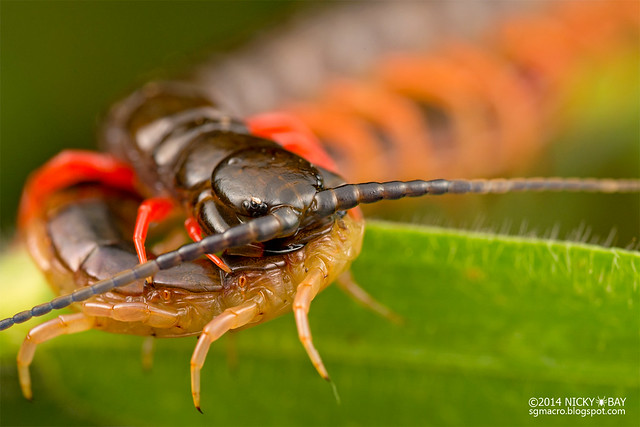

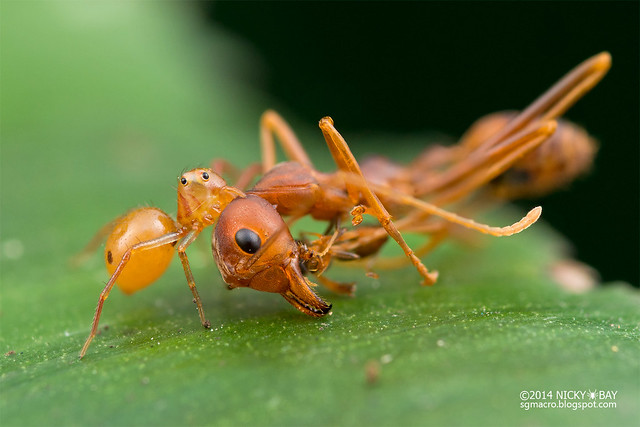
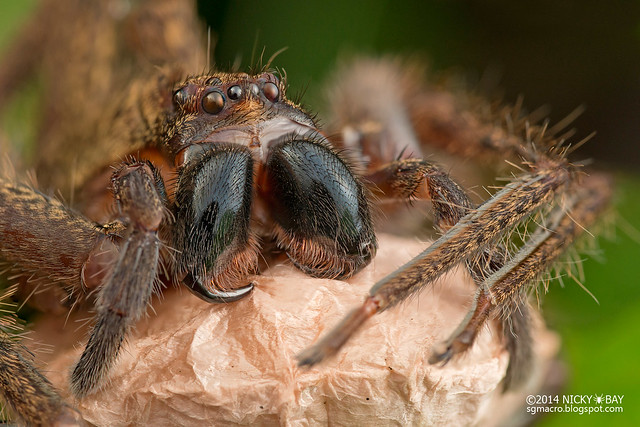
Bioluminescence
Bioluminescence is a natural wonder and would almost always have a section in my annual photo posting spree.
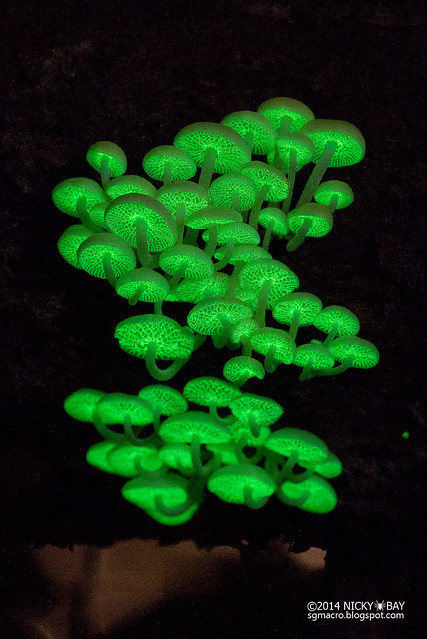
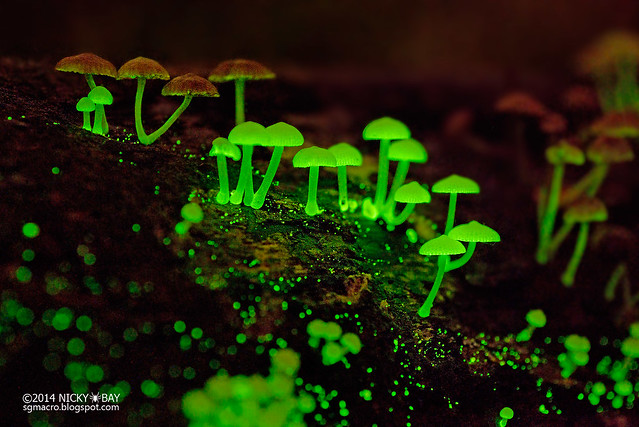
Animations
To illustrate specific traits or behavior of the subjects, I sometimes employ the use of animations. They turned out to be one of its kind on the internet!
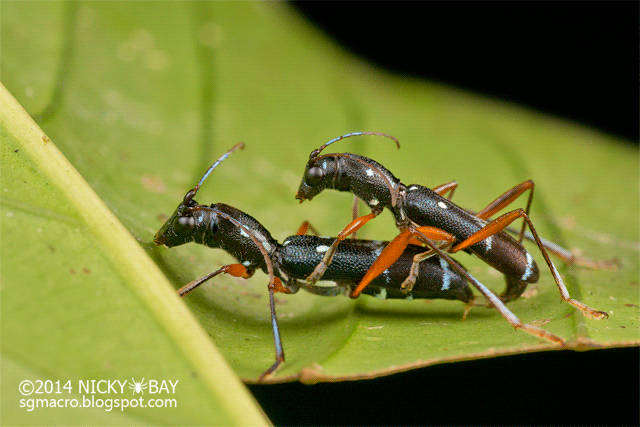
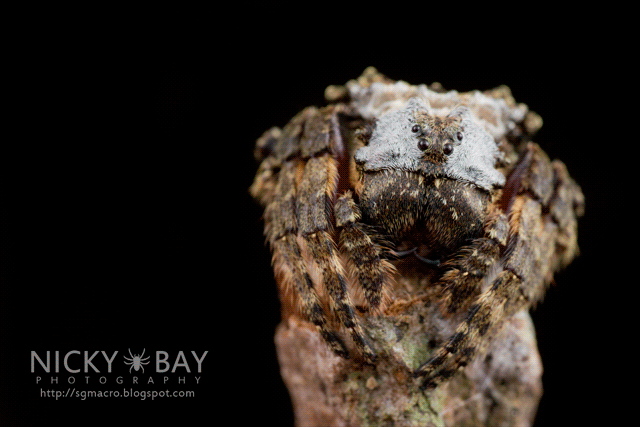
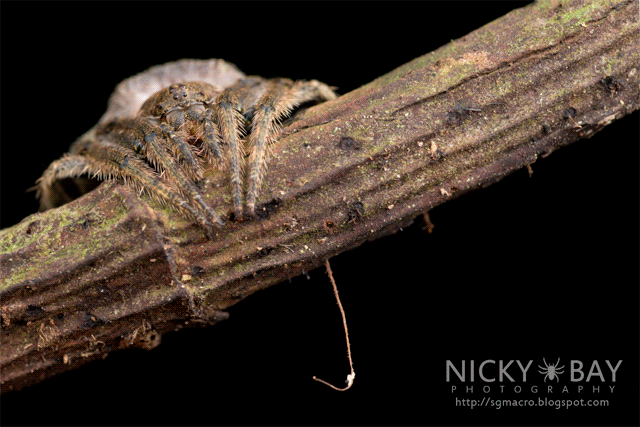
Ultraviolet Macro
Sometimes, we would shine our UV lights on almost any subject, in hope that something pretty shows up. The chances are very low, but fascinating once we hit jackpot.
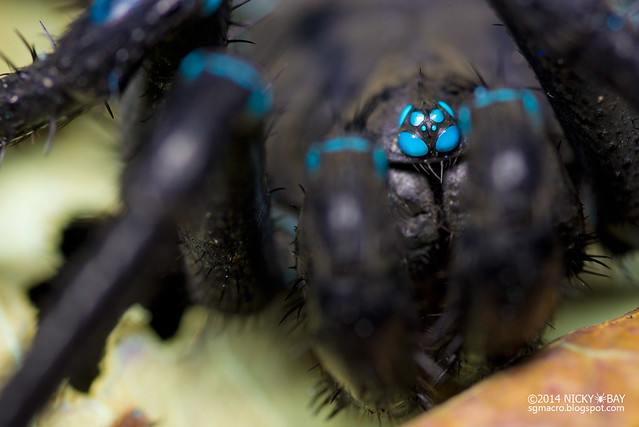
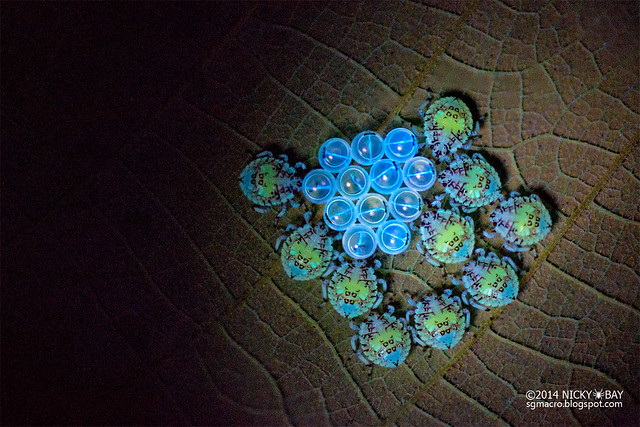
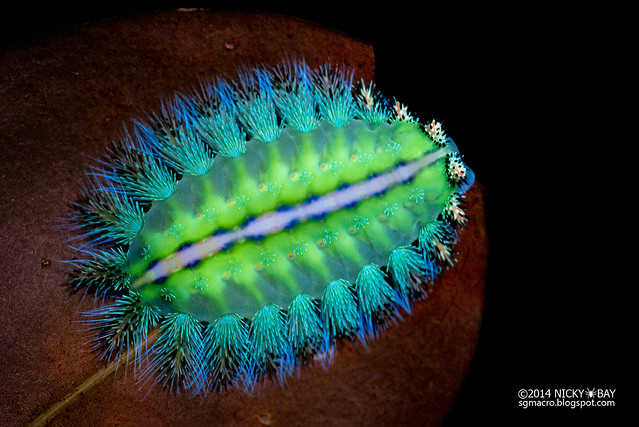
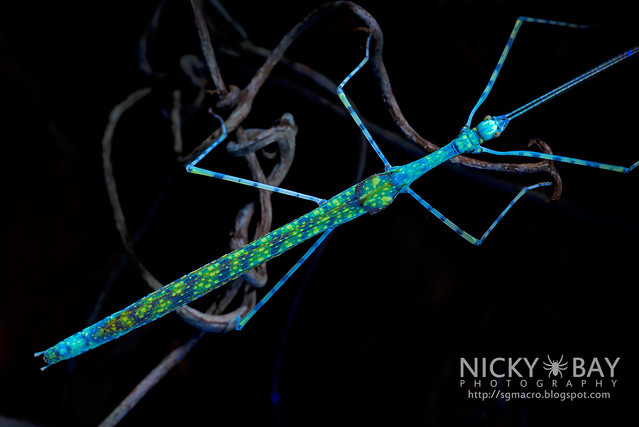
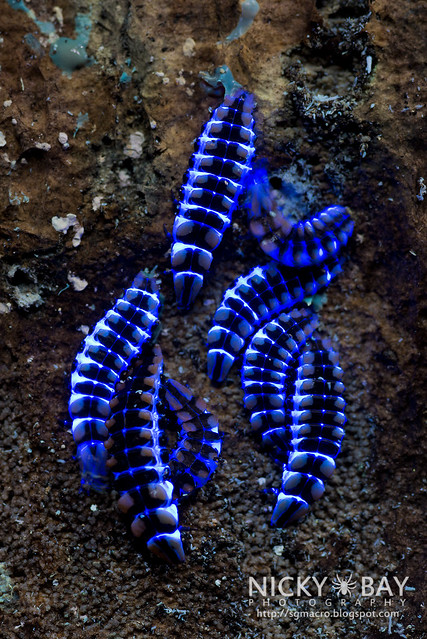
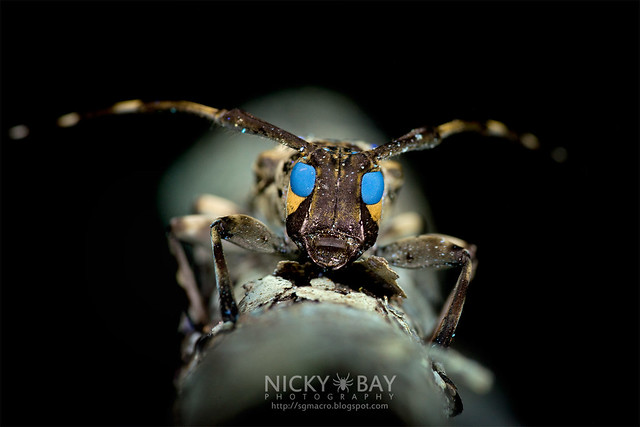
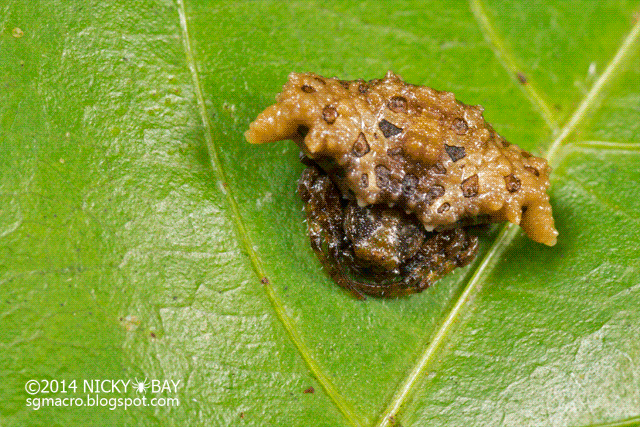
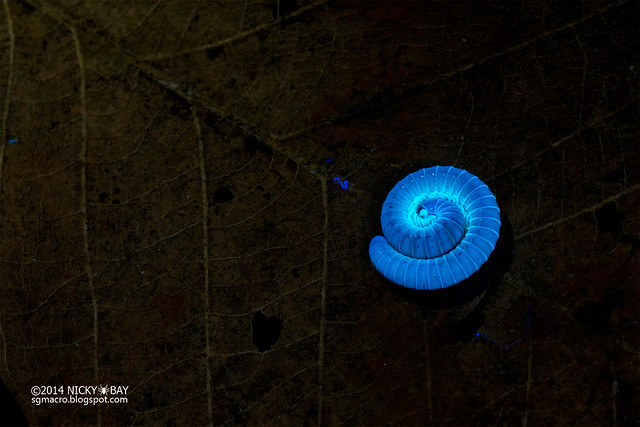
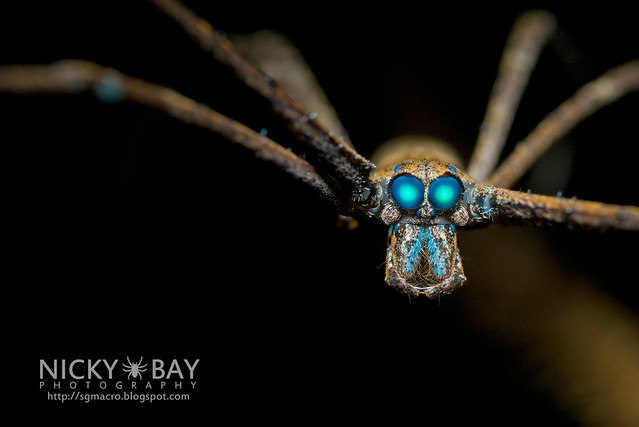
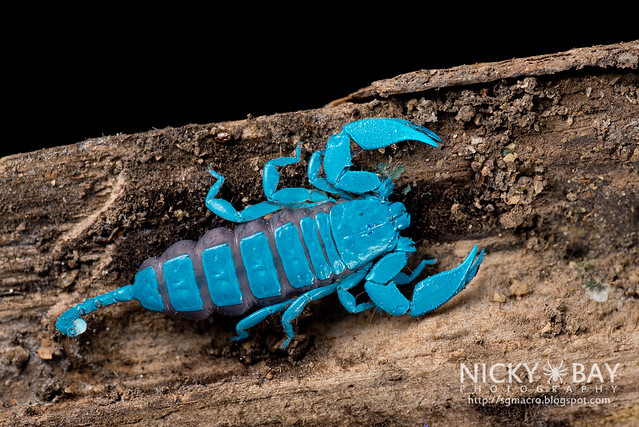
Wide-Angle Macro
Any subject over 2 inches would potentially be good candidates for wide-angled shots. It makes the viewer feel… small!
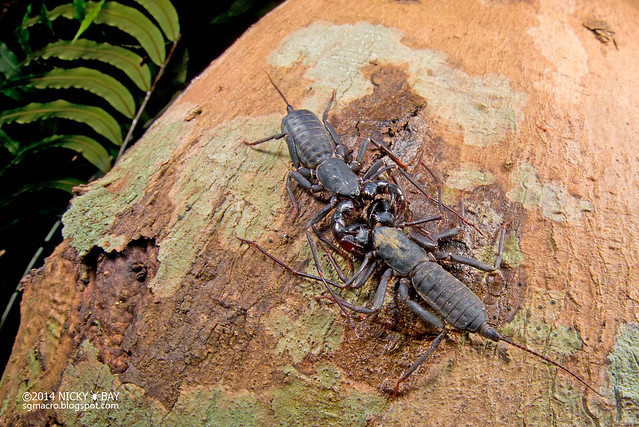

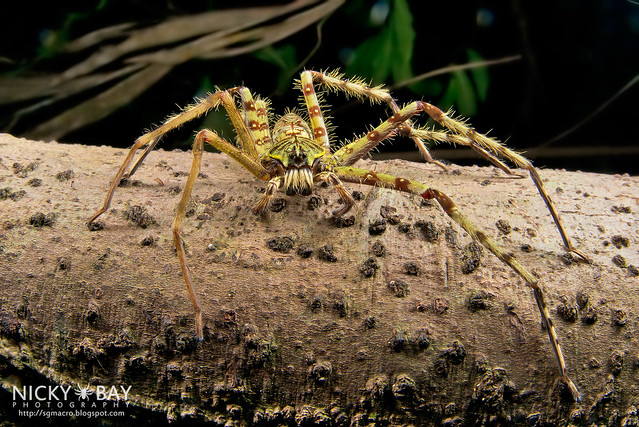
Back-lit Macro
2014 is the year when we attempted a lot more of back-lighting in our macro shots. To quote Melvyn, it “makes the common subjects look less common”.

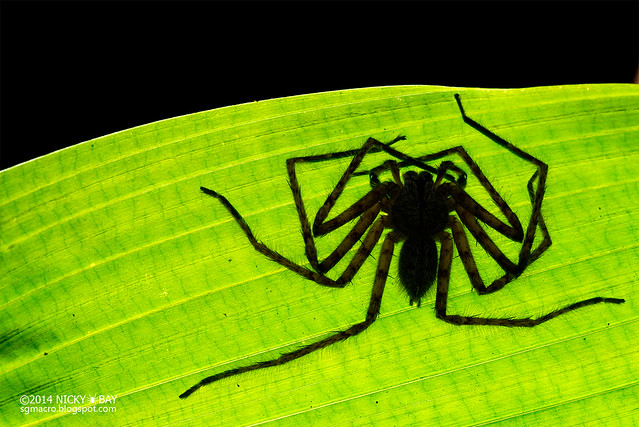
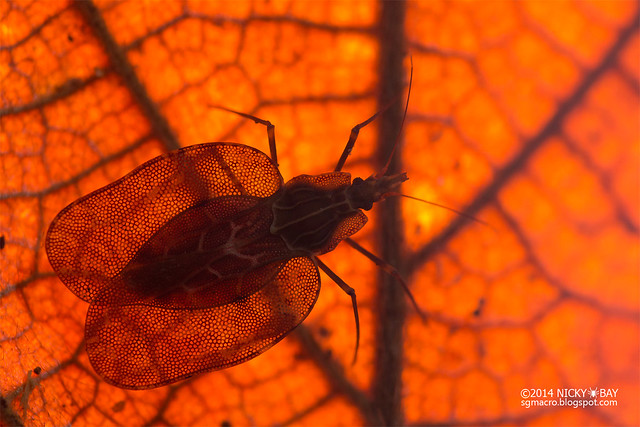
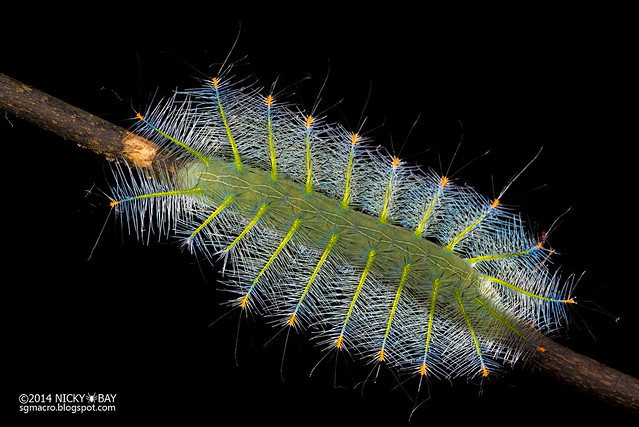
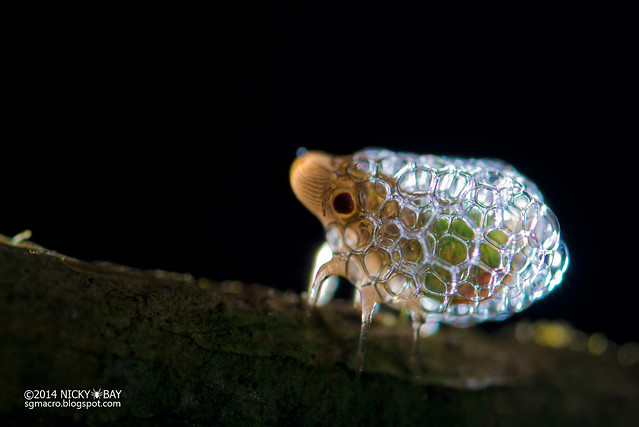
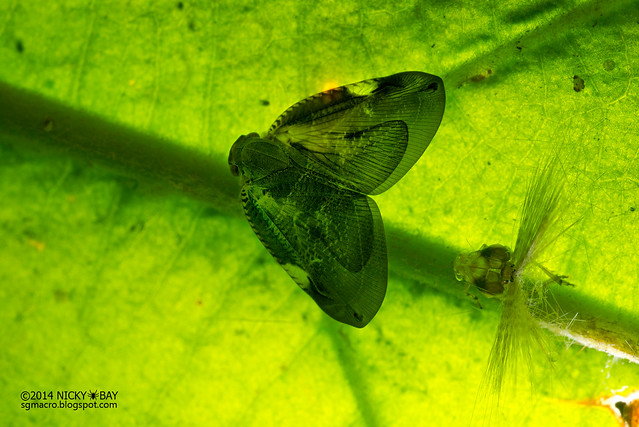
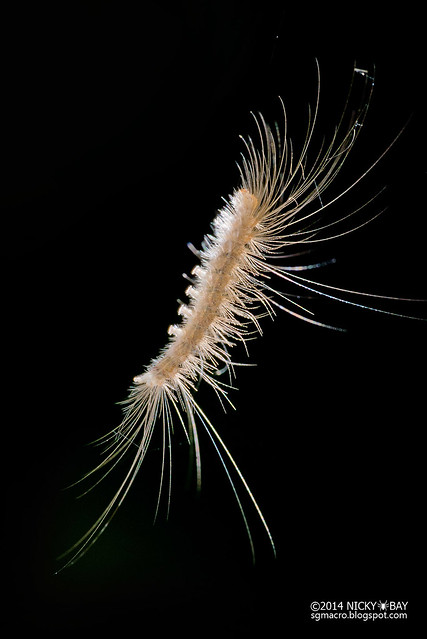
Mimicry and Camouflage
Some of the more interesting subjects that excel in mimicry and camouflage.
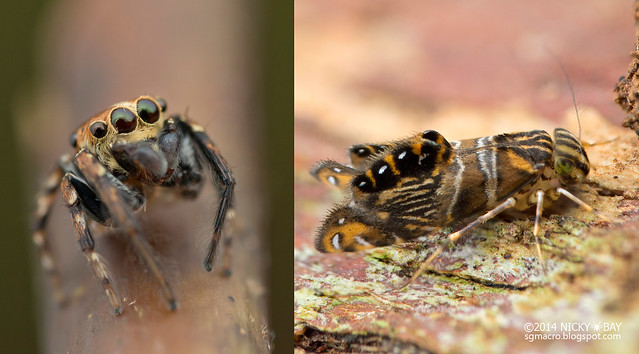
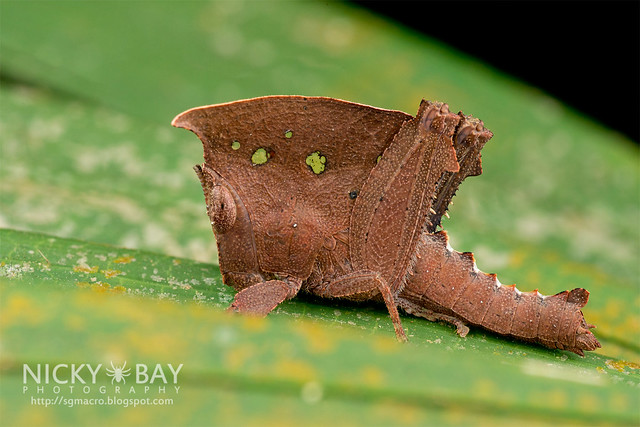
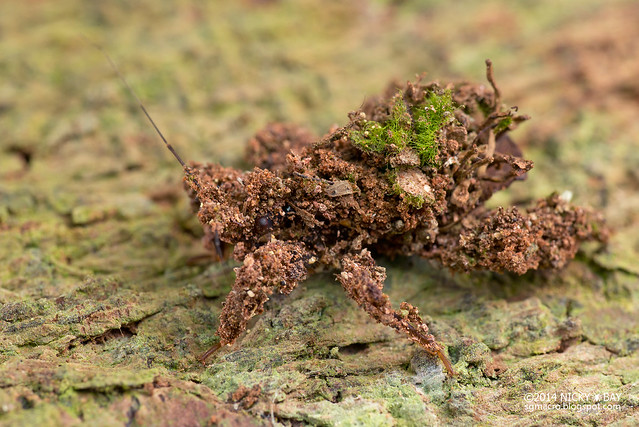
Salticidae – Jumping Spiders
Arguably the cutest family of spiders for their large anterior median eyes and the most wide-spread. I will probably have a separate post dedicated to them but here’s a small selection. 🙂

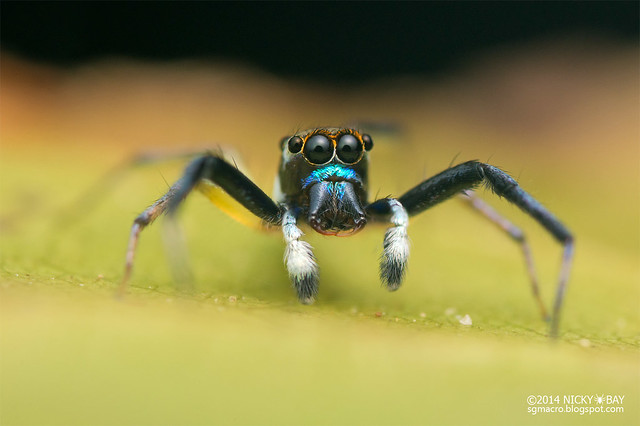


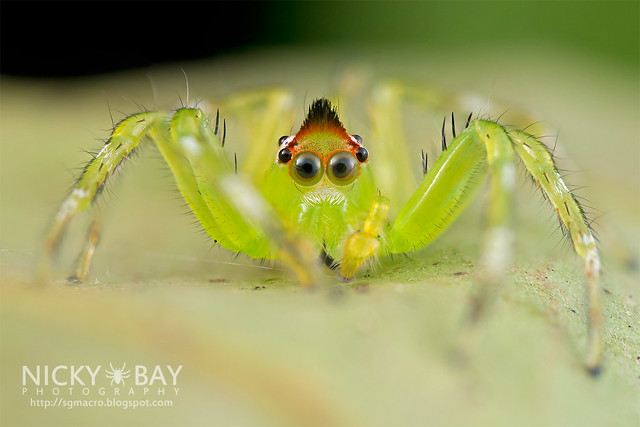
Araneidae – Orb web spiders
Despite being called orb web spiders, not all the spiders in this family build orb webs. Common names are a pain, and should not be relied on… 😉
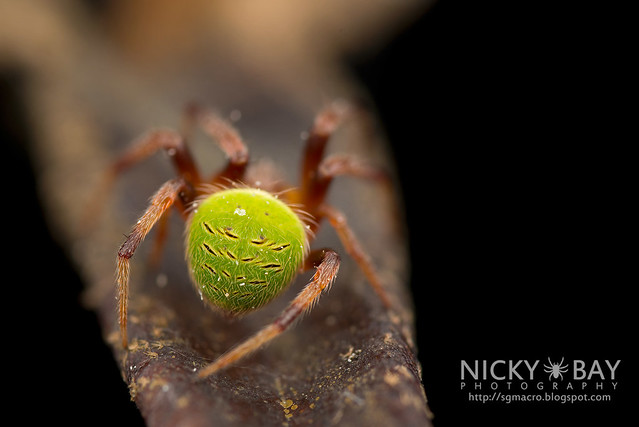
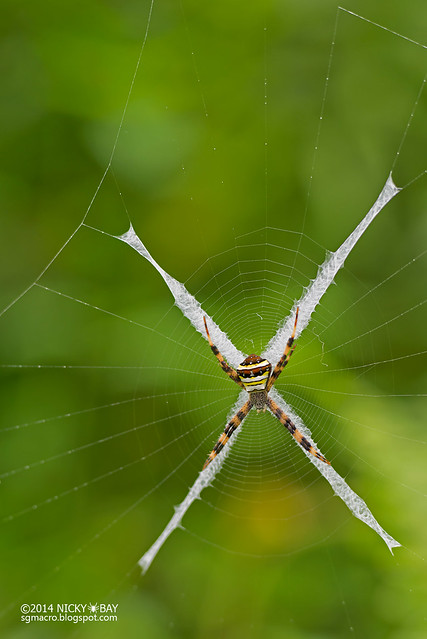
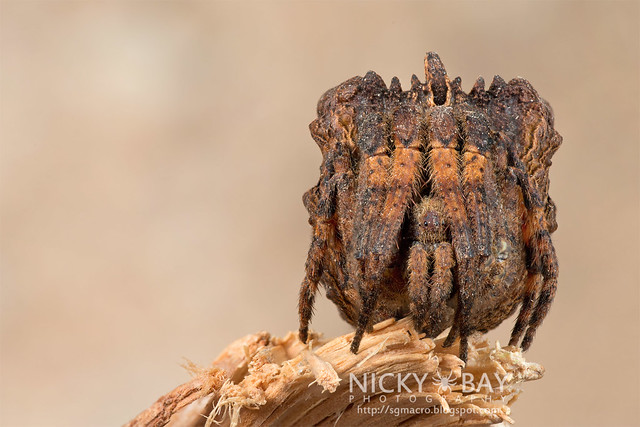

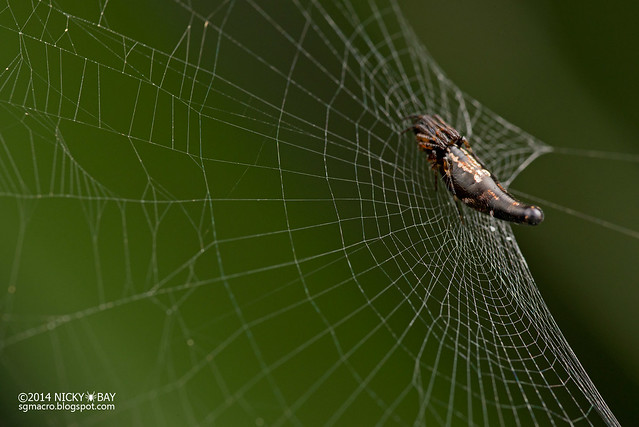
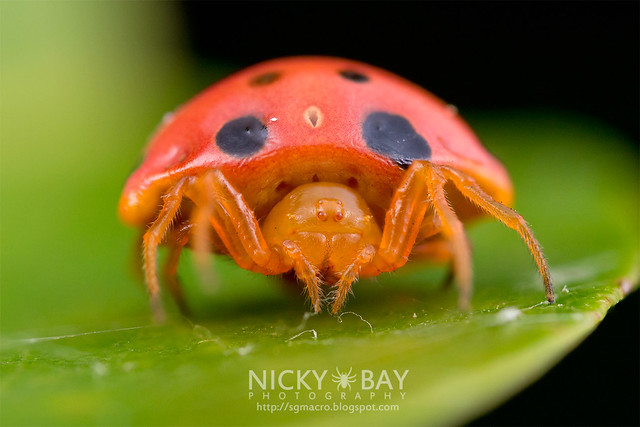
Other Arachnids – Spiders, Scorpions, Harvestmen
Didn’t have much shots of these families but still worthy of a mention. Most are boring shots, but notable because many are new records for myself!
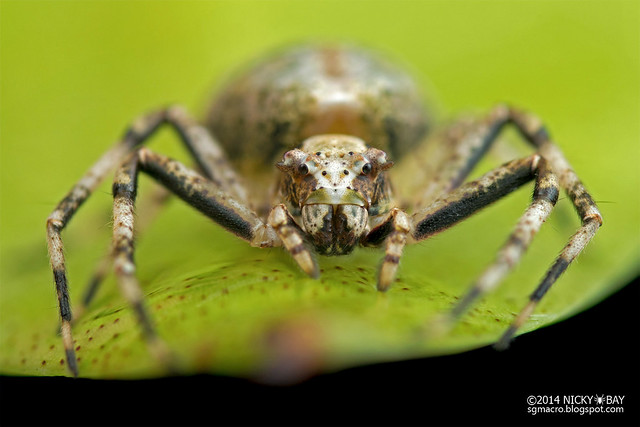
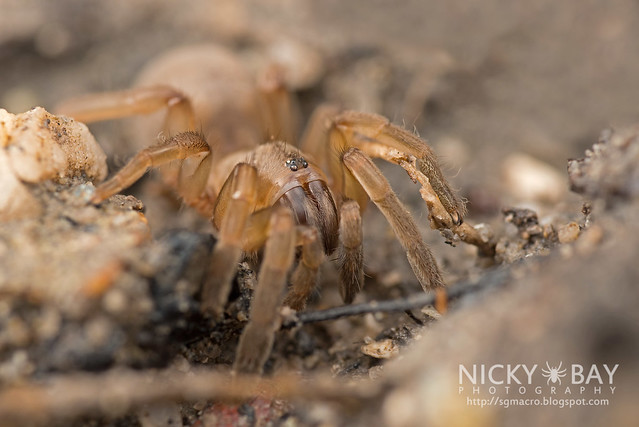
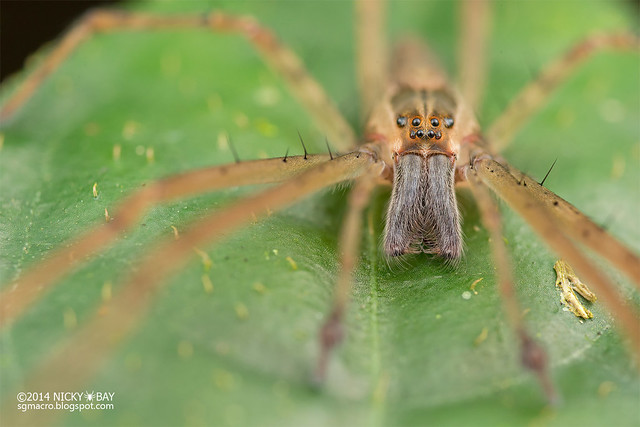
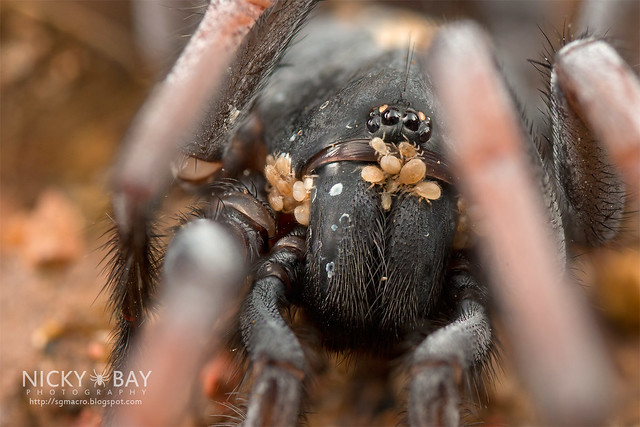
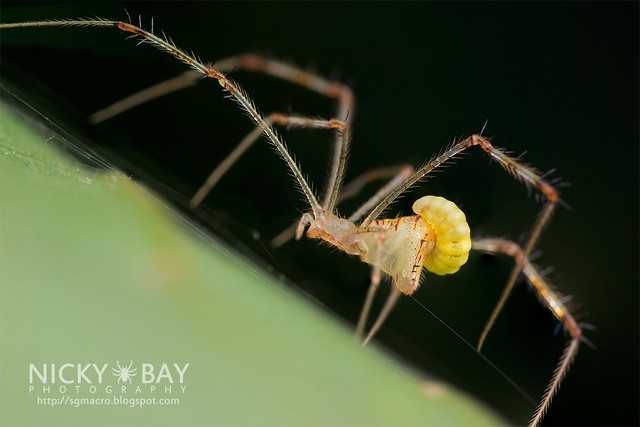
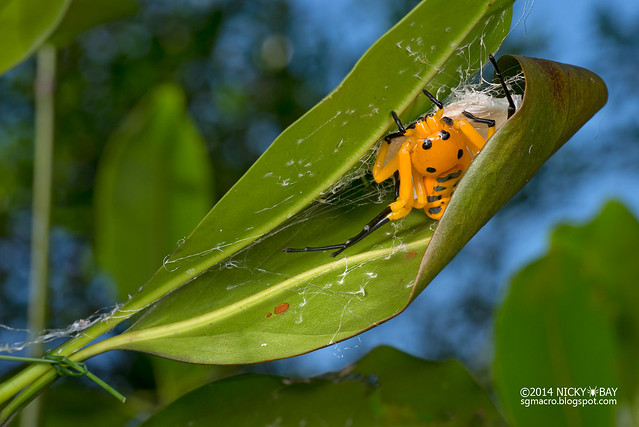
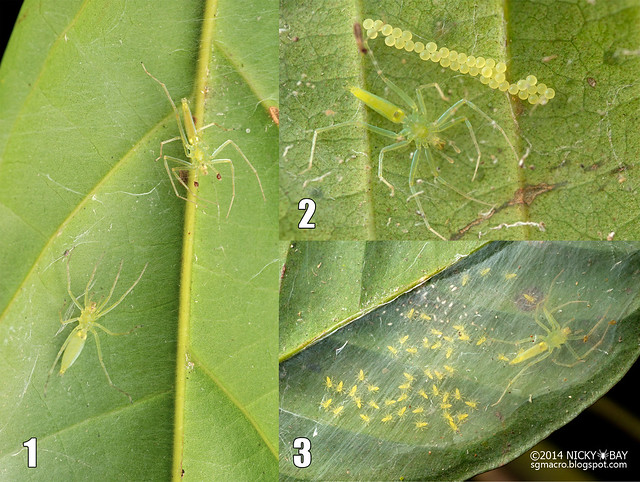
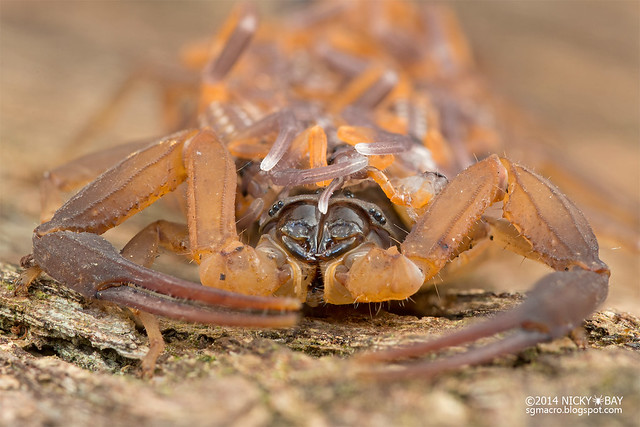
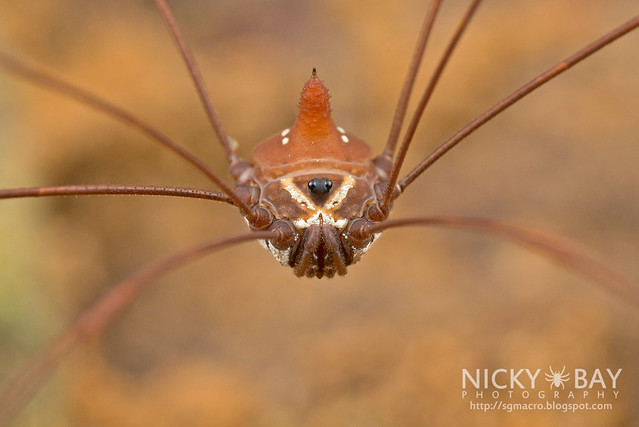
Hemiptera – Bugs
Some of the most photographed critters as their morphology can be extremely varied.
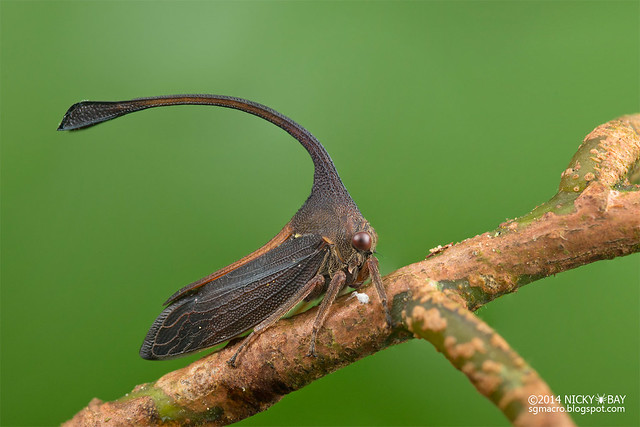

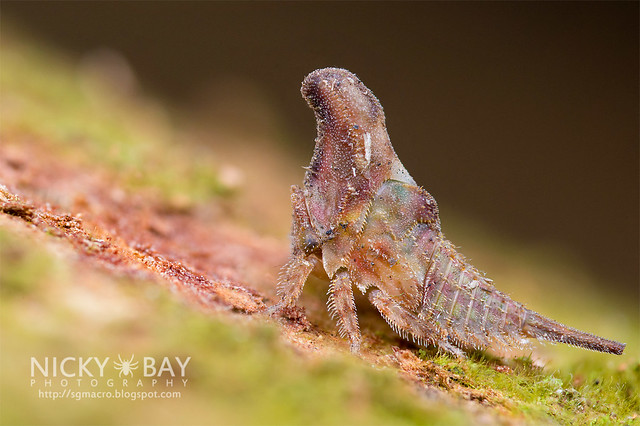
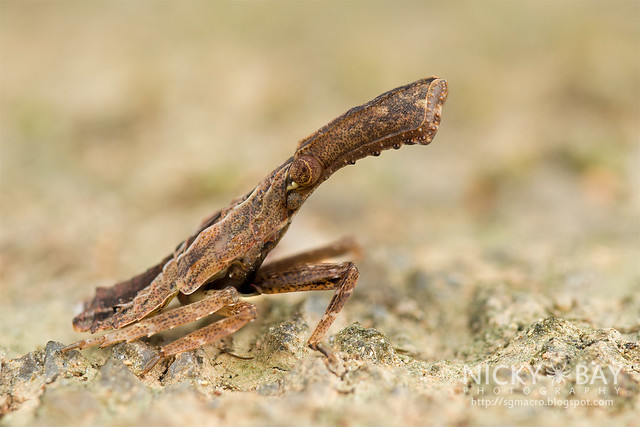
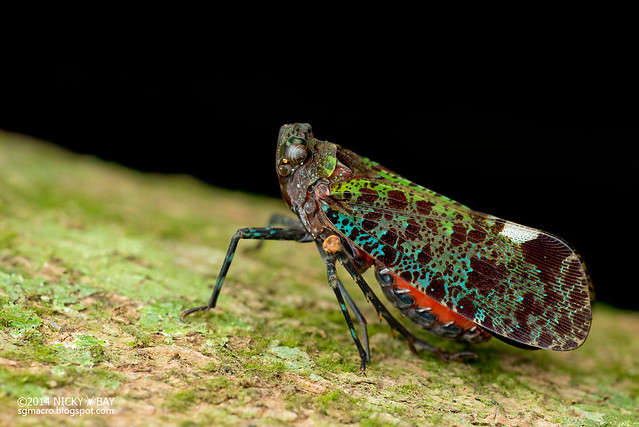
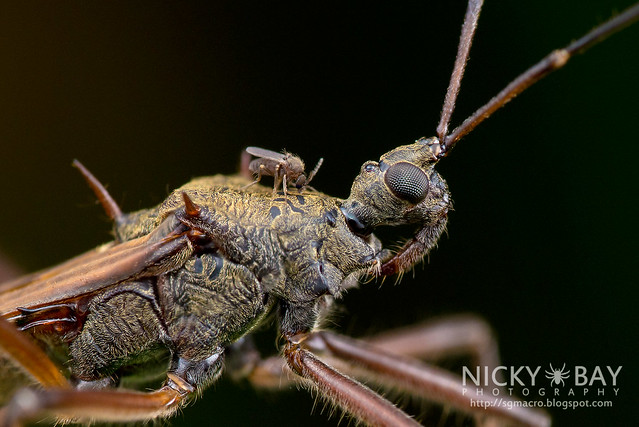

Hymenoptera – Bees, Wasps, Ants
Some of the most skittish subjects come from this order.
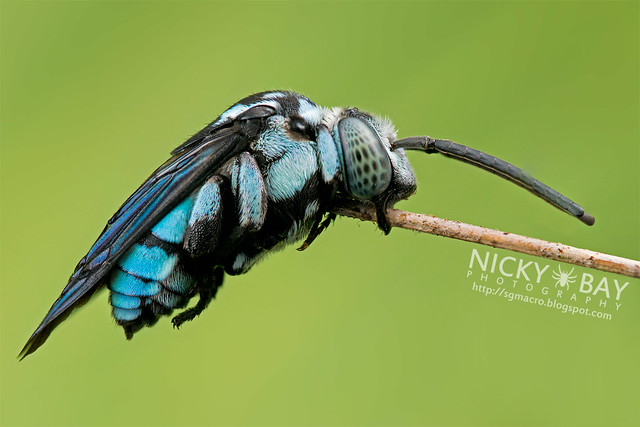
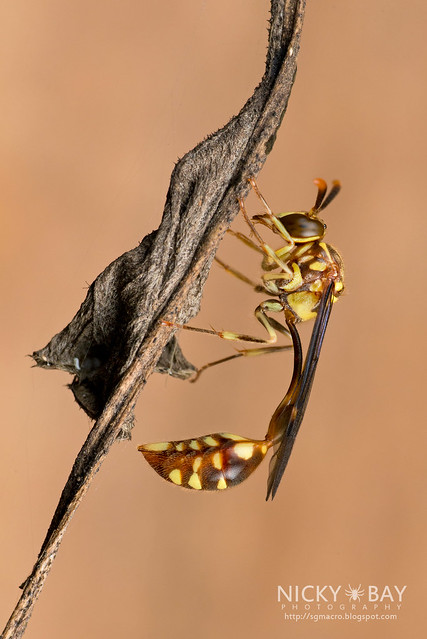
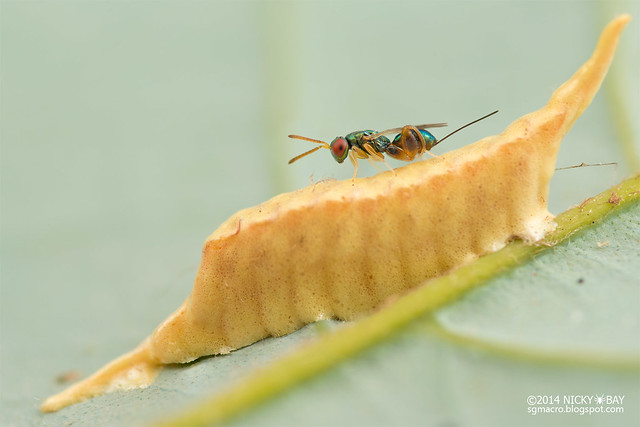
Coleoptera – Beetles
In the urban environment, the types of beetles seen can be very limited.
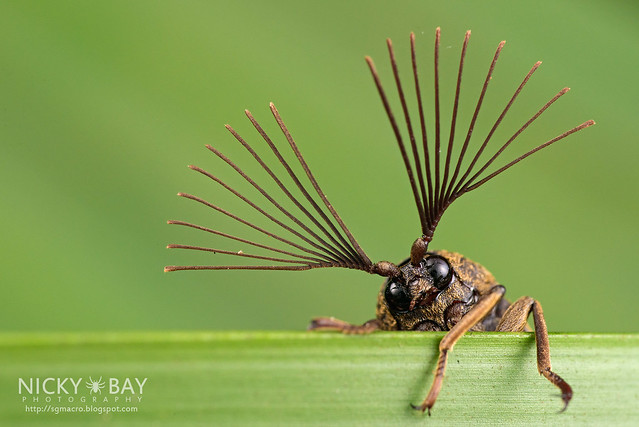
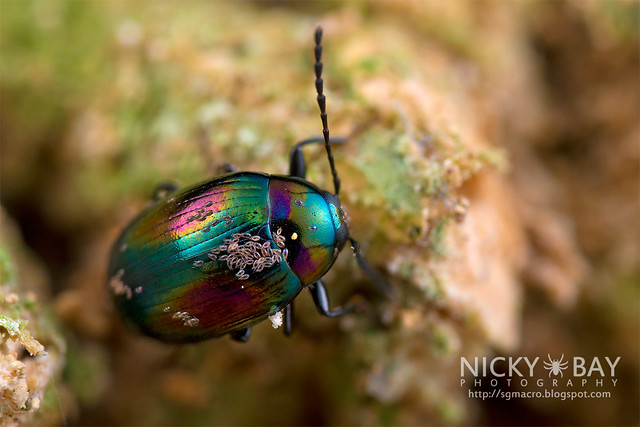
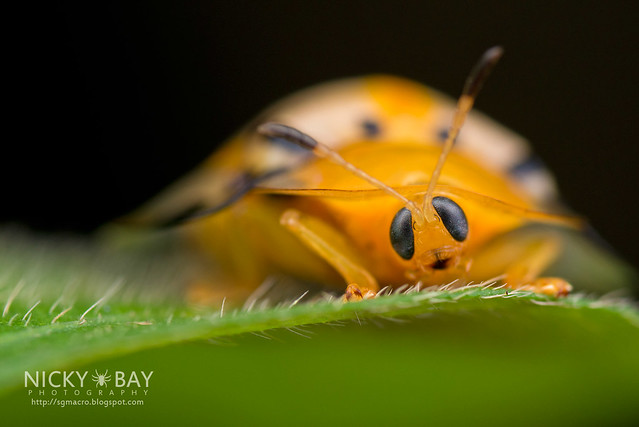

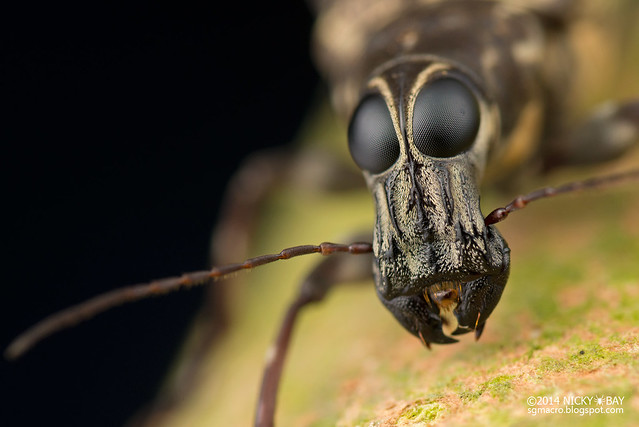
Diptera, Neuroptera, Odonata, Phasmatodea
Other mini beasts that I have not been shooting much of.
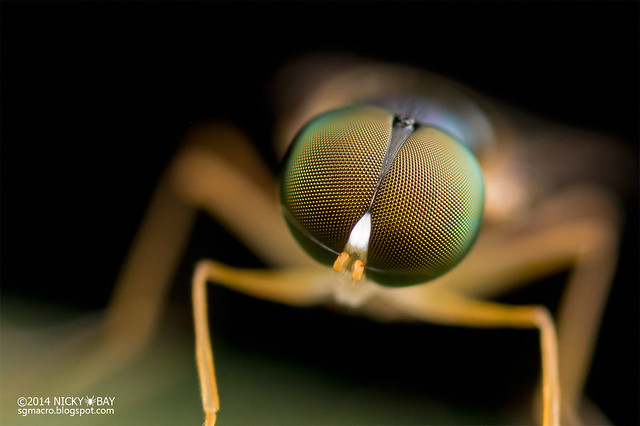
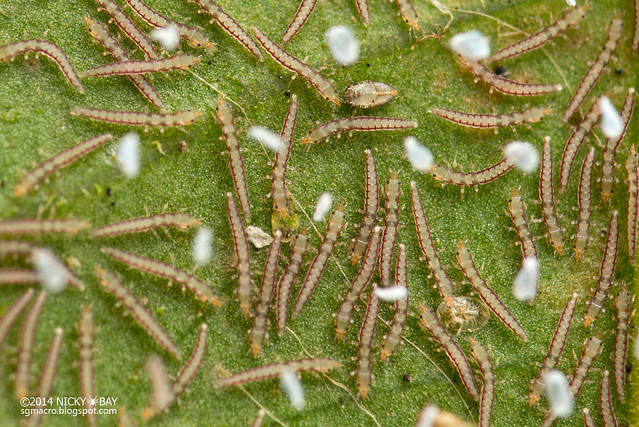
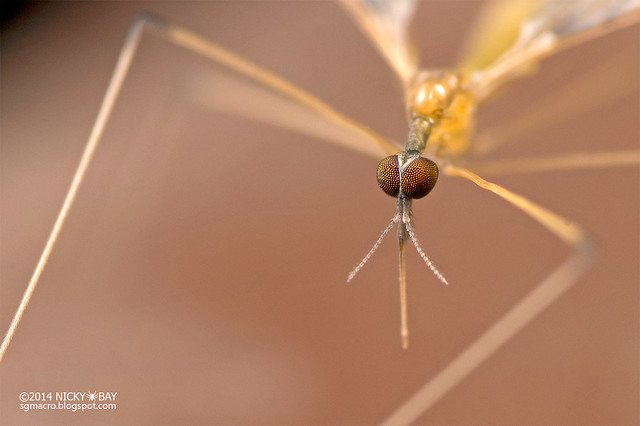
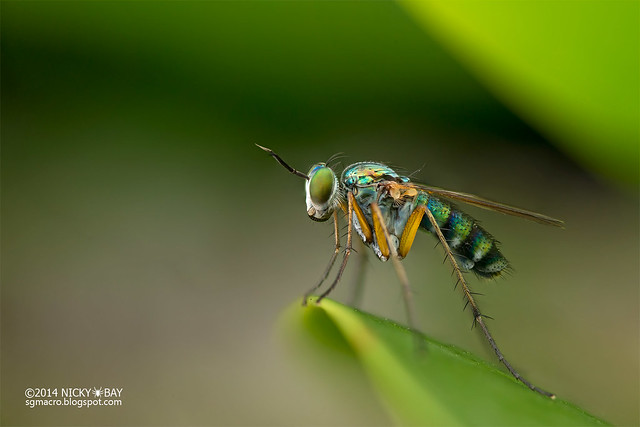
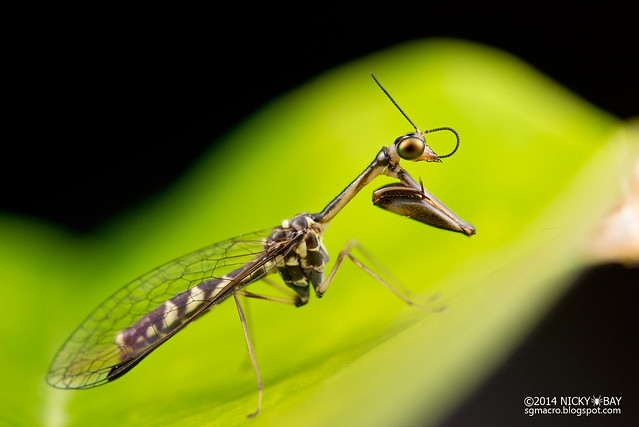
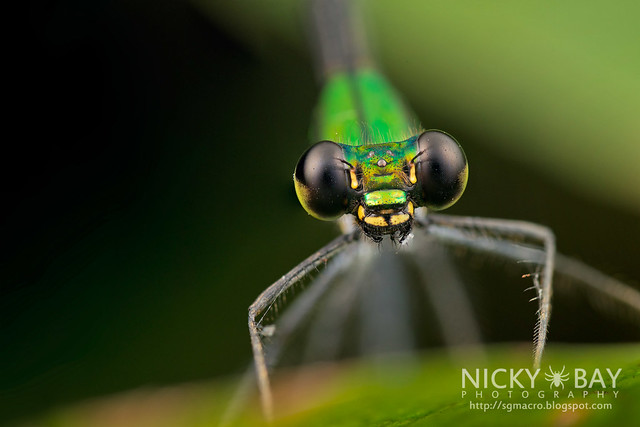
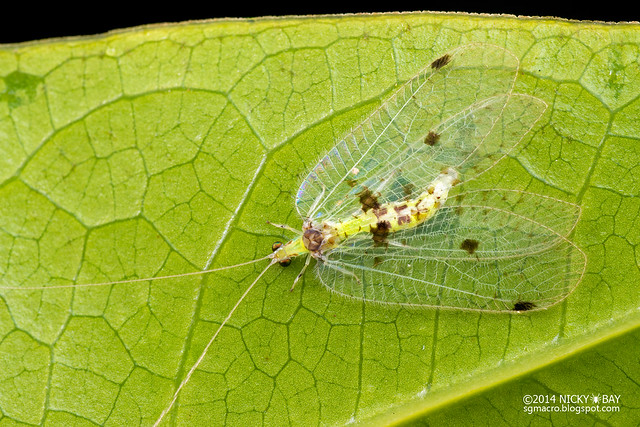
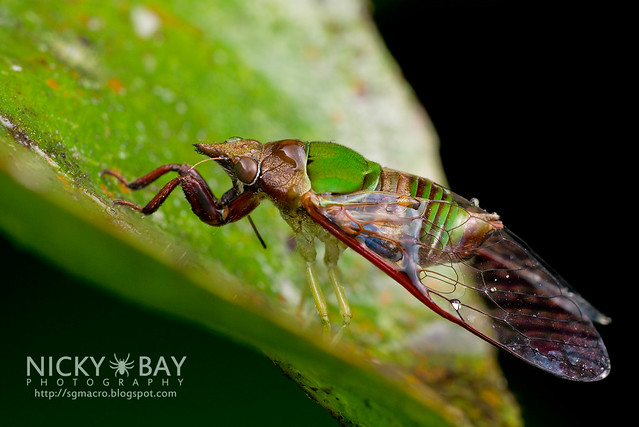
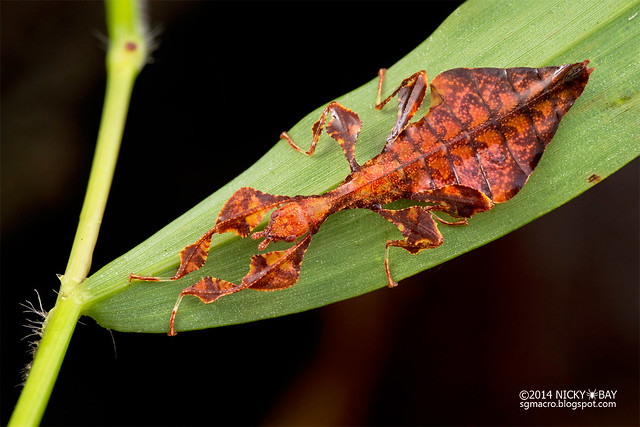
Reptilia – Reptiles
Not my usual subjects as my normal setup allows only subjects of up to 1.5 inches long in the frame. Nevertheless, the occasional close up opportunity may come by once in a while.
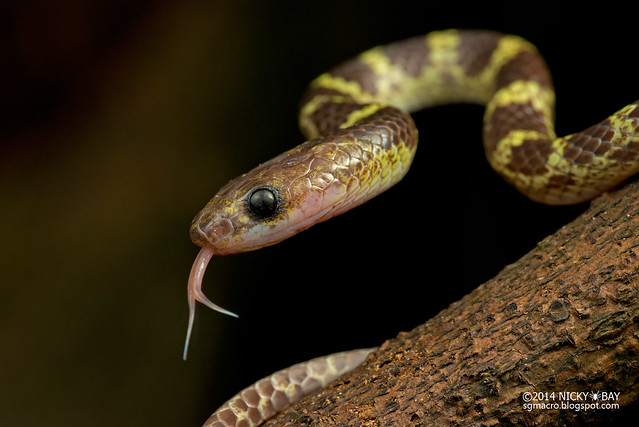
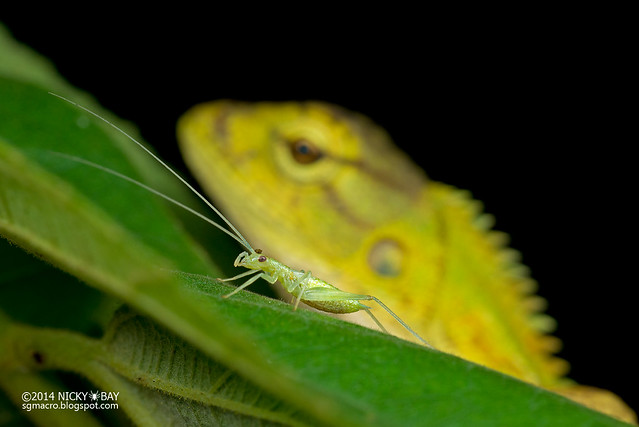

Larvae, Caterpillars and Chrysalises
These could be from any order, but largely lepidopterans.
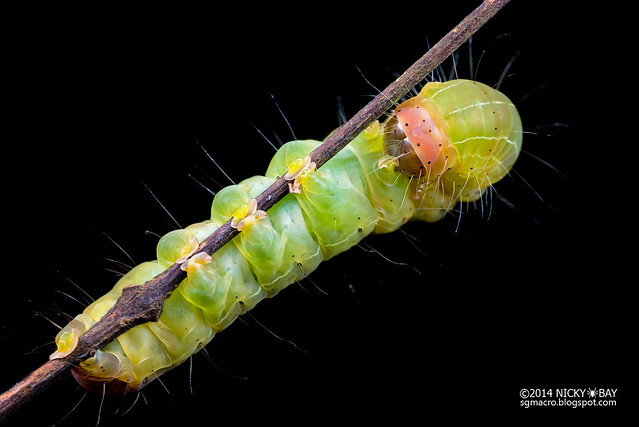
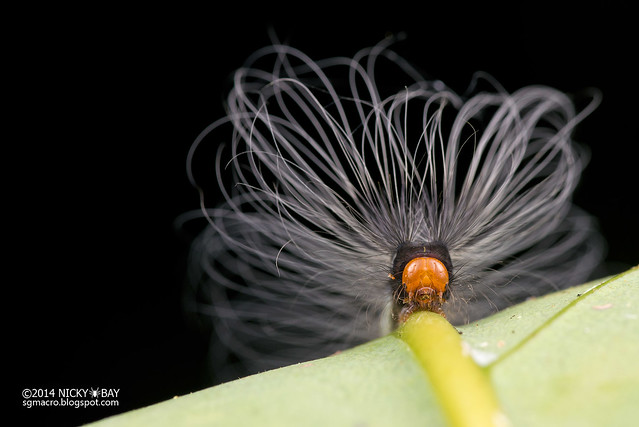
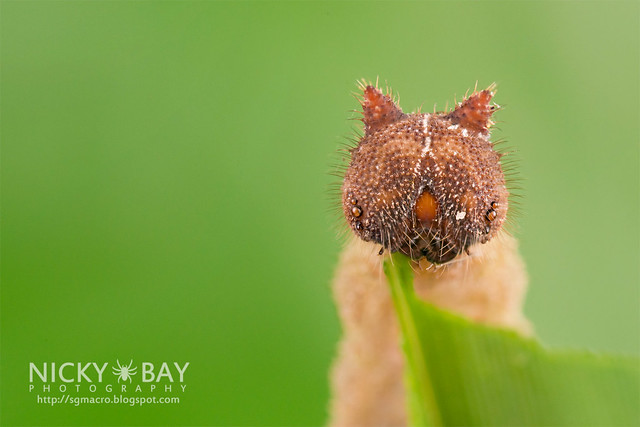
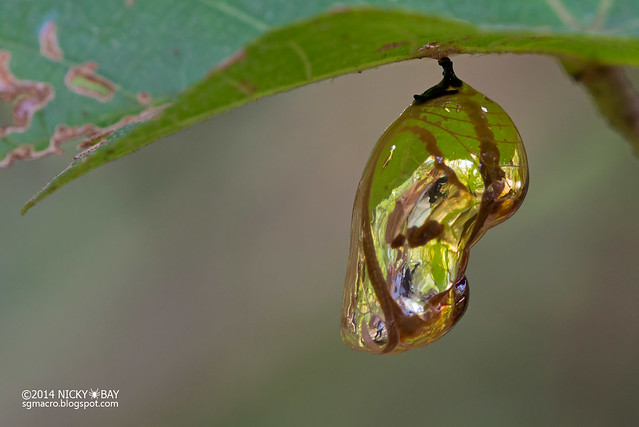

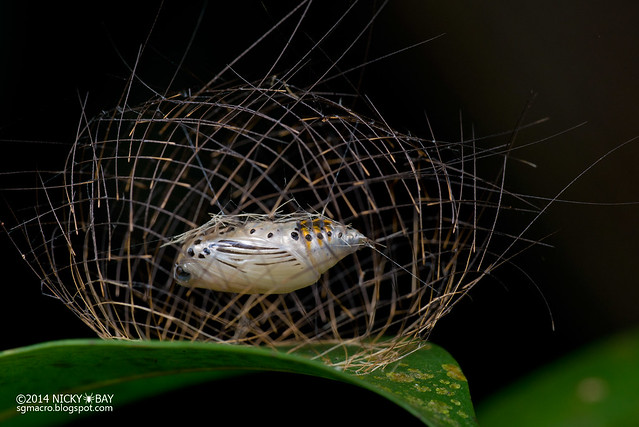
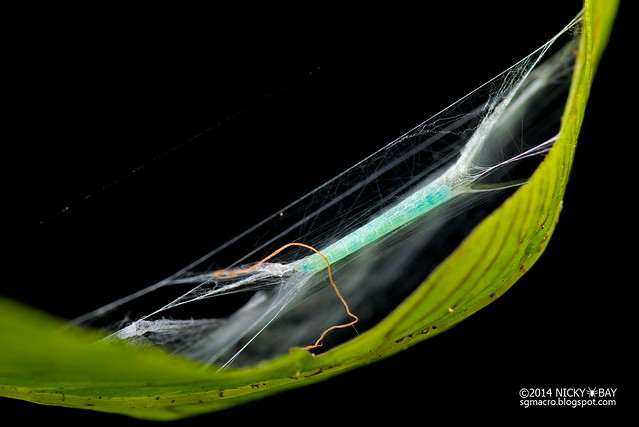
Conclusion to 2014
Thank you for enduring the entire series! I hope this series triggers more people to be interested in the fauna of Singapore and Southeast Asia. Please feel free to leave a comment below, I would love to hear from all of you! And, if you like this post, remember to share it with your friends as well!
Haven’t had enough? You can also view my 2013 Macro Highlights.

